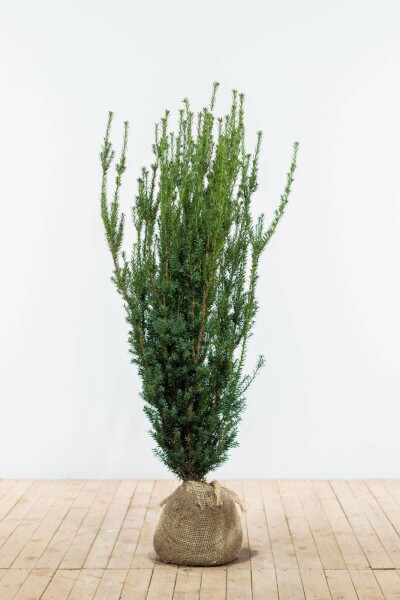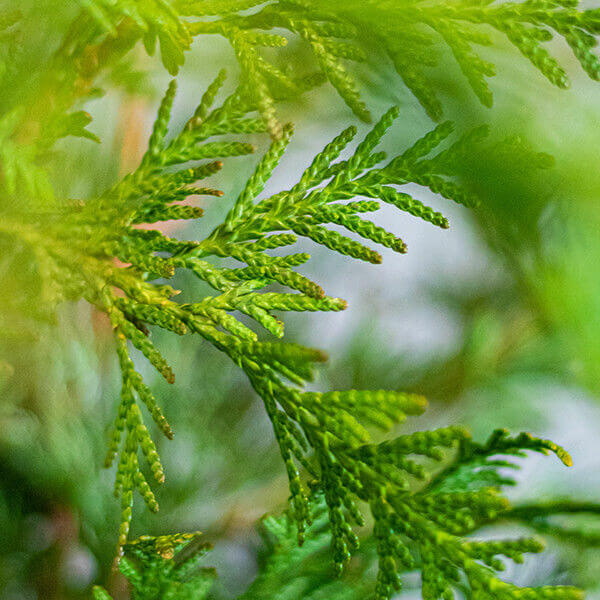Hedge Plants For Traditional Gardens
Hedge Plants For Traditional Gardens
Blog Article
Hedging Plants For Butterfly Gardens
Enhance your garden's appeal with lush hedge ranges such as Yew (Taxus), Thuja, Laurel, Photinia, and Bamboo, celebrated for their structural stability and environmental advantages.
Yew and Thuja provide evergreen coverage and winter season resilience, while Laurel provides rapid growth and broad, aromatic leaves.
Photinia includes seasonal appeal with its dynamic red foliage, and Bamboo provides a low-maintenance, peaceful atmosphere.
These hedges enhance air quality, decrease sound, and develop tranquil, private areas.
Proper planting, spacing, and upkeep ensure energetic development and ecological harmony.
Explore how these lavish varieties can elevate your garden's appeal and wellness.
Secret Takeaways
Transform Your Garden With Lush Hedge Varieties
- Select Yew for its thick, evergreen development and unrivaled longevity.
- Select Laurel for its fast growth and broad leaves, making sure fast personal privacy.
- Pick Photinia for its vibrant seasonal foliage, which turns a striking dark red.
- Utilize Bamboo for a low-maintenance, winter-hardy hedge with visual appeal.
- Space plants 2-3 per meter and prune frequently for ideal development and health.
Popular Hedge Plants
When transforming a garden with lush hedge varieties, it's vital to think about popular hedge plants such as Yew, Thuja, Laurel, and Photinia due to their special attributes and advantages.
Yew (Taxus) is extremely respected for its longevity and dense, green growth, making it a prime choice for withstanding landscapes.
Thuja is noted for its evergreen foliage and robust winter durability.
Photinia adds seasonal vibrancy with red leaves that darken gradually, creating dynamic visual appeal.
Laurel provides fast growth and fragrant, broad leaves, ideal for quick privacy.
In Addition, Bamboo is an excellent choice for ambiance, using a low-maintenance, winter-hardy alternative that boosts the garden's visual with its classy, swaying canes.
These selections cater to a range of horticultural requirements and preferences.
Benefits of Garden Hedges
Garden hedges offer a wide range of benefits, making them an important addition to any landscape. These natural barriers are affordable to execute and provide significant wind defense, improving air circulation and contributing to sound reduction. The thick foliage of hedges like Thuja and Beech guarantees personal privacy by obstructing visibility, developing a tranquil and secluded environment.
Hedges also play a vital role in microclimate guideline, offering a steady environment that fosters plant development and lessens temperature changes. Their intricate leaf structures filter toxins, improving air quality and adding to a healthier garden community.
Moreover, hedges master noise decrease, absorbing and deflecting sound waves to lower ambient sound levels. This dual performance of offering both visual and acoustic privacy boosts the overall tranquility and aesthetic appeal of any garden.
Planting and Maintenance Tips
For an effective hedge, careful preparation of the planting location is essential. Ensure the soil has correct pH and drainage to support strong root development.
Space the plants appropriately for the selected species. Water the hedge frequently throughout its initial development phase, changing as needed with seasonal changes.
Carry out a systematic bug control and disease avoidance method, using organic or chemical treatments when essential. Regularly inspect for aphids, mites, and fungal infections.
Apply mulch to keep wetness and suppress weeds. Seasonal pruning promotes thick development and air flow, necessary for plant health.
Following these guidelines will help you cultivate a dynamic, well-kept hedge that boosts the beauty of your garden.
Spacing and Trimming Guidelines
Spacing and Trimming Guidelines
Appropriate spacing and trimming are important for cultivating healthy, aesthetically appealing hedges. Sufficient spacing makes sure each plant gets enough nutrients, light, and airflow.
Follow these standards for optimum hedge upkeep:
- Spacing: Position hedge plants 2-3 plants per meter to motivate robust development.
- Pruning Strategies: Routine pruning is essential for preserving wanted hedge height and shape. Cut brand-new growth in summer season and cut down older wood during winter.
- Seasonal Care: Adjust cutting techniques and schedules according to seasonal requirements to guarantee plant health.
- Hedge Height: Routinely monitor and trim to keep the preferred hedge height and attain consistent looks.
Sticking to these steps will ensure your hedge grows, boosting both the appeal and functionality of your garden.
Choosing the Right Hedge
Picking the Right Hedge
Choosing the appropriate hedge involves examining elements such as mature height, foliage density, and environmental strength. Successful hedge plant selection needs understanding each species' development qualities and site-specific adaptability.
For instance, Yew (Taxus) provides outstanding longevity and dense development, while Thuja is notable for its winter season strength. In addition, thinking about upkeep requirements is crucial; fast-growing types like Laurel or Privet demand routine trimming, whereas low-maintenance alternatives like Bamboo or Ivy might be more suitable for those looking for very little maintenance.
Ecological factors such as soil type, light schedule, and moisture conditions must also direct the selection process. This mindful method ensures the picked hedges will flourish, supplying both aesthetic and practical advantages to the garden landscape.
Delivery and Planting Recommendations
To guarantee your hedge plants thrive, they ought to be provided by specialized carriers and planted quickly upon arrival.
Follow these necessary steps for successful planting:
- Soil Preparation: Improve the soil with organic matter to improve drain and nutrient material.
- Planting Depth: Develop a trench twice the width and equal to the depth of the root ball.
- Watering Methods: Water completely after planting, keeping the soil regularly moist but not saturated.
- Mulching: Use a layer of mulch to maintain wetness and reduce weeds.
Customer Support and Service
Provided the vital function of prompt help in horticultural pursuits, our customer support team is available six days a week through telephone, e-mail, and social networks to provide professional recommendations and swiftly resolve any concerns. Their dedication to quick action times makes sure customer complete satisfaction by resolving inquiries related to plant health, ideal planting techniques, and upkeep schedules.

Communication Technique
Within 24 hours
This extensive support group, enhanced by a stellar 9.3/ 10 customer score, highlights our dedication to enhancing the gardening experience for every client.
Frequently Asked Questions
For How Long Does It Take for Hedge Plants to Establish?
Hedge plants normally need one to 3 years to end up being completely developed, with the precise period differing by species and growing conditions.
Efficient care during this crucial period is important for robust development. Constant watering, alert weed control, and proper fertilizer application are critical in promoting strong root advancement.
For example, fast-growing species like Laurel may establish quicker, while slower-growing ranges such as Yew may take longer. Persistent maintenance accelerates the facility procedure, leading to healthy and dense hedges.
What Are the very best Hedge Plants for Personal Privacy?
The concern of the best hedge plants for privacy includes examining evergreen and deciduous choices.
Evergreen hedges like Thuja, Laurel, and Cypress offer year-round coverage, making sure constant privacy.
In contrast, deciduous hedges such as Beech use seasonal privacy, shedding leaves in colder months.
Secret upkeep suggestions for personal privacy hedges consist of regular cutting, fertilizing in spring, and appropriate spacing-- generally 2 to 3 plants per meter.
In addition, constant watering and persistent weed elimination are essential for promoting healthy, thick growth.
Can Hedge Plants Bring In Wildlife to My Garden?
Yes, hedge plants can attract wildlife to your garden by offering necessary benefits like shelter, food, and nesting sites, thus improving regional biodiversity. Yew, holly, and laurel are outstanding for bring in birds, while ivy supports a range of insects.
However, it is essential to keep in mind that there are some downsides, such as increased maintenance to handle pests and routine upkeep. Thoroughly picking and preserving hedge ranges can help stabilize these benefits and disadvantages, ultimately cultivating a sustainable and dynamic environment in your garden.
Are There Any Blooming Hedge Plants Available?
Yes, there are flowering hedge plants readily available that can enhance the charm of your garden.
For instance, Elaeagnus, also referred to as Olive Willow, produces aromatic white flowers in the fall, adding a touch of beauty.
Photinia, another popular option, showcases lively red leaves that mature into an abundant green, producing a dynamic visual impact throughout the seasons.
To ensure these plants flourish, it's necessary to practice proper pruning strategies and seasonal maintenance, such as trimming brand-new development in the summer season and cutting back in the winter.
These steps will assist preserve the health and aesthetic appeal of your flowering hedges.
How Do I Prevent Pests in My Hedge Plants?
To prevent insects in hedge plants, utilize natural bug control approaches and keep proper hedge care. Introduce beneficial insects like ladybugs, which take advantage of damaging pests, to produce a well balanced environment.
Frequently check your hedges for indications of problem and promptly eliminate any click here affected parts to avoid the spread. Guarantee the health of your hedges by applying balanced fertilizers and providing adequate water.
Make use of mulching to maintain soil wetness and correct spacing to lower plant tension and promote robust growth. These practices collectively help in reducing pest concerns and keeping a healthy hedge.
Conclusion
In essence, picking the best hedge ranges such as Yew, Thuja, and Laurel can transform any garden into a tranquil haven. These plants supply year-round greenery, improve visual appeal, and offer practical benefits like sound reduction and wind security.
Correct planting techniques, precise spacing, constant watering, and seasonal trimming are important for optimal development.
Trustworthy delivery services and expert customer assistance make sure a smooth experience from purchase to planting, making it simpler than ever to elevate your outside space.
Garden hedges use a wide variety of benefits, making them an important addition to any landscape. These natural barriers are cost-efficient to carry out and offer significant wind defense, improving air blood circulation and contributing to noise decrease. The dense foliage of hedges like Thuja and Beech makes sure privacy by blocking exposure, developing a secluded and peaceful environment.

Pruning Techniques: Regular pruning is necessary for keeping preferred hedge height and shape. Trim brand-new growth in summer and cut back older wood throughout winter.
Report this page